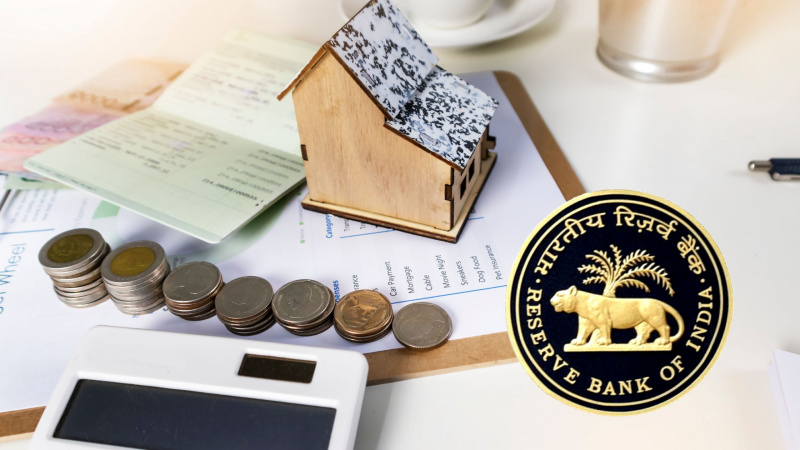India GDP Forecast 2025-26 Raised to 6.5% by S&P: Key Drivers & Global Risks Explained
What’s Behind the 6.5% Growth Forecast?S&P's upgraded outlook is based on several key assumptions that suggest domestic momentum will remain strong. These inc
- by Shan 2025-06-26 10:30:46
S&P Global Ratings raised India's GDP growth forecast for the fiscal year 2025–26 to 6.5% reflecting greater confidence in the economic fundamentals, even in the context of global volatility. The report, released on June 24, 2025 was consistent with the Reserve Bank of India (RBI) own growth forecasts, thereby providing a clear signal that both international observers and domestic economic policy made by portfolios from Raghuram Rajan to Jayant Sinha, confirmed that the Indian economy remained resilient. This level of certainty and confidence in economic growth was derived from a number of domestic tailwinds and the assumptions that insulated and buffered India from the ongoing shocks affecting global economies. However, there are caveats. From tensions in the Middle East to rising oil prices and overturned tariff arrangements, the risk horizon was wide. Let us unpack the situational awareness about what is driving this 6.5% projection, the residual or remaining risks, and what this meant for the business, policy and investment landscapes.Introduction: A Vote of Confidence in Uncertain Times
S&P's upgraded outlook is based on several key assumptions that suggest domestic momentum will remain strong. These include: A normal monsoon, critical for agriculture and rural demand Lower global crude oil prices, easing import costs and inflation A dovish monetary policy stance from the RBI Income tax concessions, boosting consumption and middle-class spending The resilience of domestic demand in the face of external shocks These elements are expected to create a favorable environment for India to accelerate investment, manufacturing, and consumption-driven growth. India's economy may be diversifying, but monsoons are still a dominant force for its growth. Over 40% of the workforce remains wedded to agriculture, which means rain influences crop production, rural income, and food inflation - all of which impact demand in other industries. Normally, a monsoon creates stability in food prices and improves rural consumption across most sectors from FMCG and two-wheelers to fertilizers and microfinance. However, erratic rainfall effects farm incomes, generates supply shocks to other sectors that can eventually affect GDP. Table: Impact of Monsoon Quality on India’s GDP Growth *2025 is forecasted by S&P. Sources: IMD, RBI, MoSPI India is the third largest oil importer in the world, and imports account for more than 90% of its crude oil and 50% of its natural gas. So, as a consequence of that dependency, the economy is more exposed to swings in global oil prices. As luck would have it for the time being, crude prices have declined to the range of $78–$82 per barrel, down considerably from $100+ as recently as 2022, and that has obvious implications for inflation, the current account deficit, and input costs for a range of industries from transport to chemicals. Table: India’s Crude Oil Import Bill vs Brent Crude Price A continued decline in oil prices would help the RBI stay accommodative and support fiscal stability. But S&P warns that any flare-up in Middle East tensions could reverse this trend quickly. After a period of rate hikes between 2022 and 2024 to tackle inflation, the Reserve Bank of India has shifted its tone toward calibrated easing. While the repo rate remains at 5.50% (as of June 2025), signs point toward potential cuts later this year, especially if inflation stays within the 4–5% range. Lower interest rates make loans cheaper for both consumers and businesses. This stimulates investment in housing, automobiles, and capex-heavy sectors like manufacturing and infrastructure. Key Takeaway: One lesser-discussed factor supporting S&P’s growth revision is direct tax relief for middle-income earners. In the recent Union Budget, the government increased standard deductions and extended tax rebates for the ₹5–15 lakh annual income segment. This has two effects: Higher disposable income, encouraging spending on durables, services, and travel Increased consumer confidence, especially in Tier 2 and Tier 3 cities Example: S&P’s optimism is tempered by significant global risks — the biggest being escalating tensions in the Middle East. Over the last two weeks, the US has launched strikes on Iranian nuclear sites, while Israel and Iran continue to exchange military responses. This raises the specter of: Oil price spikes Supply chain disruptions Investor flight to safety Another concern is the uncertain global trade outlook. With the US pushing for higher import tariffs on certain goods and ongoing realignments in global supply chains, emerging markets could see a decline in foreign direct investment and export orders. Key Insight: India's growth is not dependent on external consumption and services, as is the case in many Asian economies integrated into global export chains. Growth is powered by consumption and services delivered through India - where more than 60% of GDP is derived from private consumption and domestic services. As a result, India is less vulnerable to global slowdowns from this domestic buffer, in comparison to Vietnam, Taiwan, or South Korea. S&P stated: “India is among the least exposed to goods exports and may be better positioned to weather global demand shocks through resilient household and services demand.” This means India could continue growing even if global trade weakens, as long as inflation is under control and job creation remains steady. S&P’s revised outlook isn’t just a macro headline — it carries real implications for corporate strategy and market positioning. Infrastructure & construction: Capex revival is on track, and rate cuts could unlock housing demand. Consumer durables: More disposable income and rural demand support. Financial services: Credit growth set to expand, especially for MSMEs. Automobiles: Tax concessions and rural demand bode well for two-wheelers and entry-level cars. Domestic-focused stocks are likely to outperform export-heavy sectors. PSUs in oil & gas may see volatility due to geopolitical risks. Banking & NBFCs with strong rural and Tier 2/3 exposure could benefit from consumption-led growth. India’s 6.5% GDP forecast for FY26 looks achievable — but not guaranteed. Several conditions must hold steady: Normal monsoon Stable or falling oil prices RBI easing cycle No major external shocks If these factors play out as expected, India could not only meet but potentially exceed the 6.5% mark, especially if private investment and capex spending gain steam. But any sharp escalation in geopolitical risks or inflation could derail this momentum. For now, India finds itself in a sweet spot — but one that requires careful policy navigation and risk management.What’s Behind the 6.5% Growth Forecast?
Monsoon Matters: Why Rainfall Still Shapes India’s Economy
Energy Economics: The Double-Edged Sword of Oil Prices
RBI’s Monetary Policy: A Growth Ally
A more supportive monetary policy could accelerate private sector expansion, particularly in real estate, NBFCs, and MSMEs.Income Tax Concessions: More in Hand, More Spent
Two-wheeler sales have jumped 6.5% YoY in April–May 2025, while FMCG rural demand has seen its first double-digit growth in six quarters.Risks on the Radar: Geopolitics and Trade Tensions
India’s relatively lower dependence on exports (~20% of GDP) offers insulation, but sectors like IT services, auto exports, and pharma could still feel the pressure.India’s Strength: Resilience in Domestic Demand
What This Means for Businesses and Investors
Which Sectors Benefit Most?
Investor Takeaways
Read also: What is the Bond Market & How Does It Impact Your Investments?Final Thoughts: Can India Meet — or Beat — the 6.5% Target?
POPULAR POSTS
Rupee Forecast 2025: Key Drivers Behind INR Weakness Against the US Dollar
by Shan, 2025-08-11 07:32:23
August 2025 IPO Preview: Big Listings from JSW Cement, NSDL, Knowledge Realty & SME Stars
by Shan, 2025-07-30 11:51:27
Ola Electric Q1 Results FY26: Revenue Falls 61%, Net Loss at ₹870 Cr - MoveOS 5 in FocusOla
by Shan, 2025-07-14 12:22:55
HAL, BEL & Data Patterns: 3 Defence Stocks Riding India's ₹50,000 Cr Export Ambition
by Shan, 2025-06-26 10:00:16
Dalal Street Outlook: 5 Key Market Triggers to Watch This Week
by Shan, 2025-06-16 12:32:04
What is the Bond Market & How Does It Impact Your Investments?
by B2B Desk, 2025-02-05 09:42:55
Mutual Fund SIP Inflows Surpass Rs 26,000 Crore for the First Time
by B2B Desk, 2025-01-10 08:37:27
RECENTLY PUBLISHED

Loan EMIs to Drop as RBI Slashes Repo Rate - Full MPC December 2025 Highlights
- by Shan, 2025-12-05 11:49:44

Pine Labs IPO 2025: Listing Date, Grey Market Premium, and Expert Outlook
- by Shan, 2025-11-05 09:57:07

The Agentic Revolution: Why Salesforce Is Betting Its Future on AI Agents
- by Shan, 2025-11-05 10:29:23

Top 10 Insurance Companies in India 2026: Life, Health, and General Insurance Leaders Explained
- by Shan, 2025-10-30 10:06:42

OpenAI Offers ChatGPT Go Free in India: What’s Behind This Big AI Giveaway?
- by Shan, 2025-10-28 12:19:11

Best Silver Investment Platforms for 2025: From CFDs to Digital Vaults Explained
- by Shan, 2025-10-23 12:22:46




 Subscribe now
Subscribe now 